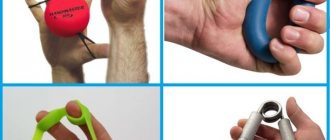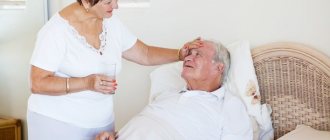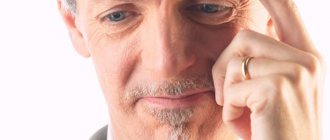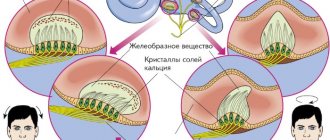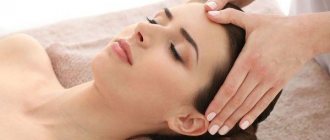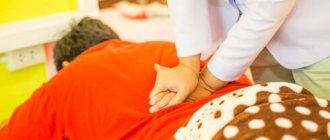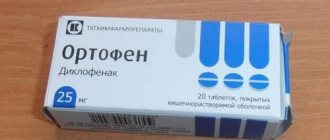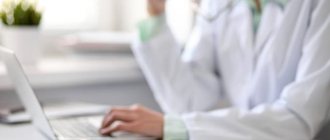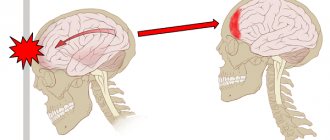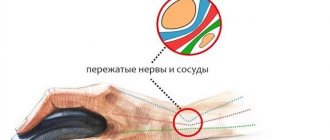10 minutes
7044 views
The effect of massage is the natural restorative power of the body, the power of life. Hippocrates
Massage is one of the main methods of recovery for a patient after a stroke. Massage should be used in combination with other types of treatment: drug therapy, exercise therapy and positional treatment (this is a special positioning of the limbs).
Why do you need a massage:
- improves blood circulation and activates lymph outflow;
- normalizes muscle tone and elasticity;
- prevents the formation of contractures (this is a persistent restriction of movements in the joints);
- strengthens the general condition of the body.
It is recommended to start massage already in the first or second week of illness. During this period, it consists of lightly stroking the muscles (with increased muscle tone) or gentle rubbing and shallow kneading at a calm pace (with decreased muscle tone).
Important: you need to know that there are a number of contraindications for massage. Therefore, the question of prescribing and stopping massage is decided by the doctor. In the early stages of recovery, massage is performed by a professional massage therapist, because... there is a high risk of developing severe dysfunctions of the body, swelling of the limbs and other complications. Massage at home is permitted in later stages of rehabilitation.
At the Peredelkino cardiological sanatorium center, therapeutic massage after a stroke is carried out as part of the Recovery medical program
Preparatory stage
Before starting the massage, it is necessary to achieve maximum muscle relaxation.
To do this, the massage therapist performs special exercises, first on the healthy limb, then on the injured one.
For the arm: supporting the patient’s elbow with one hand, the massage therapist takes his hand with the other hand and slowly raises and lowers the arm with gentle shaking movements.
For the leg: the massage therapist, supporting the patient’s foot with one hand, slowly and carefully, with shaking movements, lifts and lowers the leg with the other hand, swinging it to the sides.
To better relax the muscles, you should warm the injured limb before the massage. To do this, you can use a heating pad or a heated towel for about 10 minutes.
Massage techniques
Basic massage techniques: stroking, rubbing, kneading and vibration.
Stroking
The massage session begins with this technique. Stroking is carried out with the palms, the back of the hand and the pads of the fingers. The massage therapist's hand glides over the skin without moving it. Depending on the intensity of the hand’s impact on the patient’s body, stroking can be superficial or deep.
Superficial stroking has a calming effect on the nervous system and relaxes muscles.
Deep - stimulates blood circulation and lymph outflow, which helps reduce swelling.
Trituration
Rubbing is performed with the fingers, the edge or the base of the palm. The massage therapist applies pressure and displaces the underlying tissue, forming a skin fold. Depending on the technique of execution, rubbing can be: circular and straight, spiral, rake-shaped; performed by the eminences of the thumbs, forceps-shaped.
Rubbing is mainly used in the joint area.
The purpose of the treatment: to improve blood circulation in the massaged tissues, increase the contractile functions of muscles and the elasticity of ligaments, and normalize joint mobility.
Kneading
The technique consists of several movements: first there is fixation (grabbing the massaged area), then compression, and then kneading itself - rolling and crushing.
There are intermittent and continuous kneading, as well as kneading in the transverse and longitudinal directions. Depending on the type of technique used: felting, pressing, rolling, stretching, sliding. The impact should be deep, but painless.
Purpose of administration: to improve muscle performance, their tone and contractile function; increase the elasticity of ligaments; increase blood circulation and lymph outflow.
Vibration
Attention: vibration, as well as patting and tapping are not used during massage after a stroke.
The intensity and duration of the massage should be increased gradually. Combinations of techniques are compiled individually for each patient, taking into account the form of the disease and clinical picture.
The massage course consists of 12-20 procedures lasting 10-20 minutes for local and 40-60 minutes for general massage. The time until a repeat course is determined individually.
Massage Basics
Massage after an ischemic stroke is individual depending on the degree of neurological abnormalities, but there are general principles of the procedure:
- Correct positioning of the patient on the massage table (the upper body should be higher relative to the lower part of the body).
- The direction of movement of the massage lines of the body is from top to bottom.
- The procedure begins with warming up the collar area in a gentle manner.
- The vector of back massage movements is from the central part to the peripheral part.
Pay special attention to rubbing movements and activating muscle tone, while avoiding the use of more intense techniques on spastic muscles.
- Massage for a stroke on the left side is performed on the affected areas, on the right - vice versa.
- Minimize squeezing movements. The purpose of massage is to relax the muscles.
- The duration of the first massage sessions should not exceed 5 minutes, gradually increasing the time, reaching half an hour.
- At the initial stages, only the affected area is warmed up, and new areas are gradually involved. This technique is associated with weakness of the body in the post-stroke period and increased fatigue.
- Each movement is repeated about 5 times.
The purpose of the massage is to activate blood flow in the affected area. Restoration of motor abilities of the limbs: from elementary movements to grasping movements. Reduce muscle hypertonicity of the limbs. Gentle relief of pain. Strengthening the emotional and psychological state of the patient. Prevention of bedsores.
Effectiveness of massage:
- Stimulation of blood circulation leads to restoration of organ functioning. At the same time, the outflow of venous blood improves, which removes toxins.
- Massage for stroke helps improve the functioning of the digestive system, which is especially important for bedridden patients who have difficulty defecating.
- Positive effect on the nervous system, calming effect.
- Helps eliminate swelling, excess fluid is removed from the body.
Massage after a stroke: main tasks
The main goals for achieving massage after a stroke are:
- reduction of pain;
- improvement of well-being and mood;
- improving blood flow to all tissues, and therefore their supply with oxygen and nutrients;
- increased lymph flow in paralyzed parts of the body and throughout the body;
- preventing the development of congestive pneumonia in older people;
- preventing the formation of contractures;
- preventing the formation of bedsores;
- accelerating the process of restoring the functionality of the affected limbs.
Find out about check-up
General recommendations
The key to the effectiveness of massage is regular sessions. You can start activities within a day after the attack, in the absence of medical contraindications. If the patient has suffered a hemorrhagic stroke, you need to wait a longer period (about a week); with an ischemic stroke, the recovery period is shorter.
When performing a massage, it is recommended to adhere to the following rules. Firstly, the procedure must be carried out in courses with breaks. The duration of course therapy ranges from 20 to 30 procedures. After a break of 1.5-2 months, massage is resumed .
Secondly, carry out manipulations before lunch. After eating you should wait a couple of hours. Constantly monitor the patient’s breathing, heart rate, and skin. If there are signs of fatigue, the session is stopped. Upon completion of the procedure, the patient is provided with rest for half an hour. Temperature conditions should be comfortable, not lower than 20 degrees.
For the procedure to be effective, it is better to pre-warm the body to avoid injury to the joints. For these purposes, you can take a warm bath, you can also use a warm heating pad, but it is important not to apply it to the joints.
How to do a massage after a stroke?
For a full recovery of health, it is very important to know how to massage after a stroke correctly. In the first couple of months, you can perform exclusively local massage for paretic (partially paralyzed) and paralyzed (completely immobile) limbs, chest, lumbar area and other parts of the back.
General massage is performed only at the late rehabilitation stage. Long-term tissue stimulation in the early post-stroke period leads to fatigue, which only worsens the patient’s condition. During sessions, each zone is massaged several times (2-5). Massage begins with small areas of influence, without turning the patient onto his stomach. Often, stimulation begins with the thigh and shoulder area, after four procedures, if the patient’s health allows, the legs, forearms, hands, chest and feet are added.
By the 8th procedure, you can stimulate the lumbar area and back in the affected areas. The patient should lie on his healthy side. He is allowed to lie on his stomach only in the later stages of the massage, if there are no contraindications from the doctor due to cardiac pathologies. To increase the beneficial effect of massage and rehabilitation warm-ups, it is recommended to first warm the paralyzed limbs. To do this, you can use a reusable salt heating pad, compresses with ozokerite and paraffin. Increasing the intensity and expanding the impact zone are individual and are carried out strictly according to the decision of the attending physician, who monitors the general health indicators of the patient. In case of hemorrhagic stroke, massage begins no earlier than 5-7 days.
Technique
When performing massage in the post-stroke period, it is important not only to achieve positive dynamics in the patient’s condition, but also not to cause harm. Techniques used in massage:
1. Stroking - sliding movements, the pressing force of which does not contribute to the formation of folds on the patient’s body. This technique helps relieve pain and has a calming effect. It can be carried out with one hand or with both. They are used at the beginning of the massage and at its final stage. Strokes are distinguished by strength:
- superficial (relieve muscle hypertonicity, stimulate metabolism of the epithelium and in the subcutaneous fat layer);
- deep (activate blood circulation, prevent the accumulation of fluids).
2. Rubbing . The technique is to move your hands in different directions, involving pressure, while forming folds on the skin. The trajectory is straight or circular. Execution technique: with the edge of the palm or fingers.
3. Vibration . Characterized by rapid shaking of tissue with fingers or palm. The tempo is fast (about 2 movements per second), large amplitude. The vector of movements is from the right side to the left, on the stomach - from top to bottom. Varieties:
- continuous (shaking and shaking movements lasting more than 10 seconds);
- intermittent (clapping and chopping movements).
4. Kneading is based on grasping, pulling and lifting the muscle mass. It affects the deep muscle layers, stimulating their tone, and improves blood circulation. The technique is performed on small parts - with fingertips, on large muscles - with all fingers. The pace is slow, be sure to alternate with stroking movements.
Therapeutic exercises
Simultaneously with massage sessions, restorative passive gymnastics are performed. To do this, raise and bend the lower and upper limbs (without causing pain or tension). To restore mobility to the facial muscles, do the following exercises:
- they place a palm on their forehead and ask them to raise their eyebrows;
- alternately close and squint your eyes;
- puff out and retract the cheeks;
- open and close the mouth wide;
- smile widely;
- move the jaw to the right and left.
When performing exercises, you can help the patient with your hands.
The recovery period after a stroke requires not only drug therapy, but also regular massage treatments. The course, intensity and duration of sessions are selected individually in each case. Massaging always begins on the healthy side and gradually moves to the affected areas. During the massage, the patient can lie on both the healthy and the paralyzed side. After the session, the patient is given time to rest, covered with a warm blanket.
Foot massage
During this procedure, it is important that the body remains warm, so it is better to cover the patient with a blanket, exposing the limb needed for massage. Afterwards, the leg should also be covered. First of all, the large muscles are massaged, then they move on to the small ones, and last of all, the fingers are warmed up.
Massage has its own characteristics on different parts of the legs:
Hips . It is necessary to begin the procedure with relaxing strokes in the direction from the knee to the groin. Then they go down in a circular motion. The goal is to achieve muscle relaxation. Then - rubbing movements with the phalanges of the fingers and the base of the palm. Lying on your side or stomach, massage the back of the thigh, direction - from the knee to the buttocks.
Shin. In the anterior area, techniques of greater intensity are allowed. Superficial strokes give way to deep ones. After that, rubbing movements, turning into kneading ones. The massage is performed with fingers and palm, vector - from bottom to top. The calves are massaged in a more gentle manner to avoid spasms. Direction: from heel to knee.
Foot . The back side can be kneaded and rubbed, taking into account that the muscles are not very spastic. The specialist fixes the heel in his hand, the foot is in the toes up position. The direction of massage is from the fingers to the shin. At the final stage, attention is paid to the interosseous spaces.
For ease of visual separation, the patient’s fingers can be spread apart. The sole of the foot is massaged in a gentle manner due to the high probability of spasm, the direction is from the toes to the heel.
Hand massage
The main goal when massaging your hands is to stimulate blood circulation and reduce swelling. The direction of movement is from the shoulder girdle down, but the vector of massaging movements is the opposite - from bottom to top. The patient's position is supine or sitting, the arm is fixed or placed on the table. Massage techniques - stroking, rubbing, kneading, vibration.
Hand massage after a stroke has the following features:
- Large chest muscle. The side on which the muscles are atrophied is characterized by increased muscle tone, so the effect on it is carried out in a gentle manner. Stroking, rubbing, kneading and vibration techniques are used.
- When massaging the shoulder area, intense and deep techniques are allowed, excluding the muscle that flexes the forearm and shoulder, which is susceptible to spasms. You should also be careful on the inside of the shoulder, where veins and nerves are located, pressure on which should be avoided.
- The forearm should be massaged from the outside. The vector is from the forearm to the elbow, deep techniques are possible. When massaging the inner side, the vector of movements is preserved, superficial techniques remain.
- The hand and fingers are massaged from the outside first; deep techniques on the palms are excluded. The direction is from the fingertips.
When can you start massage after a stroke?
It is advisable to start massage after a stroke as early as a person’s health allows. If the patient is in normal condition, then the procedure begins on the second day. They start with segmental and point massage. The flexion groups are massaged on the lower extremities, and the extensor groups are massaged on the upper extremities. In muscle fibers with higher tone (examples include flexors, fingers, hands, forearms and leg extensors), only light and slow stroking can be done. For antagonistic muscle fibers with unchanged tone, gentle kneading and rubbing at increased speed are used. The first massage sessions last for 5-10 minutes, with a gradual increase in time up to half an hour.
The treatment program includes at least 20-30 sessions, which are performed every day. After the first course is completed, a break of one and a half to 2 months is required, followed by the resumption of massage procedures. The massage should be done by an experienced physical therapy instructor, rehabilitation therapist or experienced massage therapist whose specialization includes this pathology.
Face massage
The consequence of a stroke is often paralysis of half of the facial muscles. In such cases, rehabilitation exercises after a stroke are effective in developing facial activity. It includes movements of the eyebrows, opening the mouth to form the letter “O” and closing the lips, smiling, grimacing, puffing out and retracting the cheeks.
The number of repetitions of each exercise is 8-10 times. To develop the forehead muscles, use a small ball and knead with your fingers.
Chronology of actions:
- Begin with massaging with vibration movements, focusing on the occipital area.
- Make sharp movements with the palm from bottom to top in the frontal part.
- Rubbing movements and stroking go over the entire head.
- Return to the frontal area and perform muscle-throwing movements on the forehead from the side of the damaged part.
- The previous movement with the phalanges of the fingers is performed again.
- Using the edge of the palm, cutting movements are performed in the direction from the middle part of the forehead to the temporal part.
- The frontal area is massaged with a small soft ball (5-9 cm in diameter), the vector of movements is from the eyebrows up, then down.
- Massage of the oral area is performed using a ball with smoothing movements in the lip area, then the same area is massaged with light pressure using phalanges.
- The direction of movements when massaging the cheeks is in the direction of lymph flow.
